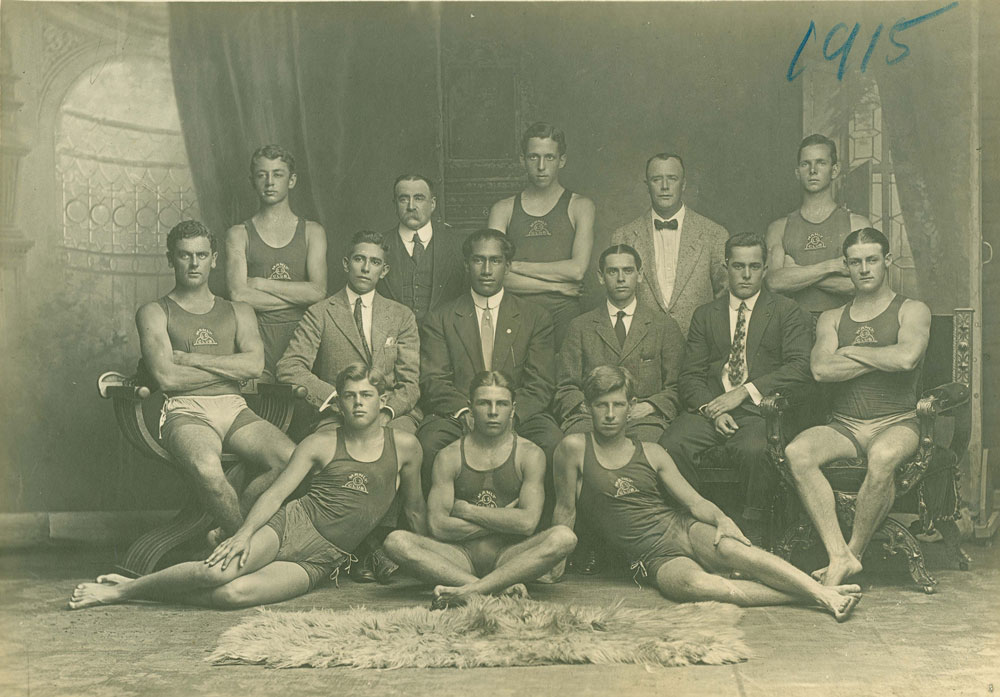About Duke Kahanamoku
Duke Kahanamoku was a champion Hawaiian swimmer and surfer. His dazzling demonstrations of wave-riding techniques at Freshwater and Dee Why Beaches in the Summer of 1914/15 are credited with popularising the sport of surfing in Australia. An Olympic gold medallist swimmer, Duke was invited to Sydney to give swimming demonstrations, then persuaded to add a surfing display. On 24 December 1914, with onlookers lining the Freshwater sands, Duke paddled out into the waves and caused a sensation with a magnificent display of surfing prowess. His exhibition of skill and grace inspired many locals to take up surfing and helped the sport become what it is today.
Location
Accessibility
Category
Share and save

Duke Kahanamoku: the start of a surfing legend
Duke Kahanamoku was born in Honolulu, Hawaii in 1890.
He learned to swim and surf in the famous beachside area of Waikiki, where his talent as a swimmer was soon obvious. In 1912, Duke qualified for the US Olympic swimming team and won a gold medal in the 100-metre freestyle race and a silver in the 4x200-metre freestyle relay in Stockholm.
Duke’s success marked the start of his international travel, performing sprint-swimming demonstrations. Tall and charismatic, the young athlete also won plaudits wherever he went for his good humour and sportsmanship.
The Aussie connection
Duke accepted an invitation to visit Australia, where he was persuaded to add a surfing demonstration to his itinerary. Surfing was still relatively unknown outside Hawaii, so Sydneysiders were keen to learn about the intriguing new sport.
With a date for the demonstration fixed for 24 December 1914 at Freshwater Beach, Duke set about crafting himself a surfboard from a piece of sugar pine he bought locally.
A report in the Sydney Morning Herald from 25 December 1914 described Duke’s performance:
The conditions were against good surfboard riding. The waves were of the 'dumping’ order … Then, too, Kahanamoku was at a disadvantage with the board. It weighed almost 100lb, whereas the board he uses, as a rule, weighs less than 25lb. But, withal, he gave a magnificent display, which won the cordial applause of the onlookers.
One of the Hawaiian-style techniques Duke demonstrated was surfing the clean waves behind the break.
Another highlight during his surfing demonstrations was to beckon young Freshwater locals, Claude West and Isabel Letham to tandem surf with him.
The start of something big
Duke’s display roused many locals to take up surfing. Today, his demonstrations on the Northern Beaches are widely credited with elevating surfing into one of Australia’s much-loved pastimes, as well as a successful professional sport.
There’s more to the story!
Duke went on to win more medals at the 1920 and 1924 Olympics and also appeared in fifteen Hollywood films, including 1955’s Mister Rogers (as himself). After returning to Hawaii, he served as Sheriff of Honolulu for nearly 30 years.
His handcrafted surfboard can still be seen at the Freshwater Surf Life Saving Club, where it has been proudly on display since the early 1950s.
Related information
- Duke Day 2015 – Celebrating the Centenary of Duke’s visit, Australian National Surfing Museum
- Duke Kahanamoku, Northern Beaches Council
- Freshwater Surf Life Saving Club, Freshwater SLSC
